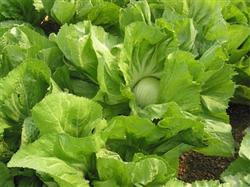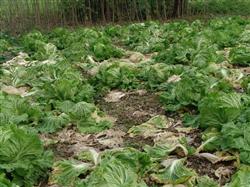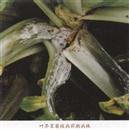Mustard planting: how to grow heart mustard in autumn?

How do you plant mustard seeds in autumn? What should I pay attention to? Please also ask netizens to point out that planting heart mustard in autumn can refer to the following methods for planting: 1. Cultivation season of mustard seed: The seeds can be sown from July 20 to July 25 by seedling transplanting and from July 25 to the end of July by direct seeding. It is usually planted in late August and harvested from late October to early November. 2. Selection of mustard planting fields: Select neutral, convenient irrigation and drainage, good water quality farmland planting. Fine soil preparation, deep and high ridge, ridge width (continuous ditch)1.2~1.3 meters. 1500~2000 kg decomposed organic fertilizer and 30~40 kg NPK compound fertilizer are applied per mu as base fertilizer when soil preparation and cultivation. 3, seed and seedling of the heart mustard: There are two ways to seed the heart mustard: one is seedling transplanting, the amount of seed used per mu is 25~40 grams, and the seedbed is 30 square meters; the other is direct seeding, sowing 2~5 seeds per hole, covering the hole after sowing to prevent rain washing or sun exposure. It is best to cover with sunshade net, strive to sow whole seedlings, and timely do a good job in field management such as thinning seedlings, watering and weeding. 4. Transplantation of heart mustard: Double row planting, row spacing 65 cm, plant spacing 25 cm, about 4000 plants per mu. Seedlings cultivated by seedling transplanting method should be transplanted with soil, and stiff seedlings, weak seedlings and sick seedlings should be eliminated. After planting, 0.5% urea aqueous solution was applied in time to improve survival rate and accelerate early onset of rejuvenation. 5. Daily management of heart mustard: Timely supplement seedlings: after planting, in case of high temperature and dry weather, it is easy to appear sick seedlings, stiff seedlings and dead seedlings, so it should be supplemented in time to strive for comprehensive balance and early development. Fertilization and watering: due to the rapid growth of cabbage mustard, it needs constant fertilizer and water supply. Fertilize once every 10 days or so before ball formation (from planting to ball formation), drench 750~1000 kg of human excrement per mu, or drench with 8 ~ 10 kg of ammonium bicarbonate and 8~10 kg of calcium superphosphate mixed with water for 3~4 times. When the heart rate of wrapped mustard reaches about 5%, it can be re-applied with 20~30 kg urea and 15 kg potassium chloride dissolved in water per mu. For fields with fast growth and low fertility, ammonium bicarbonate and calcium superphosphate can be added to water every 7~10 days. 6, mustard pest control: 50% phoxim 1000 times solution was used to control underground pests when sowing. After emergence to harvest, the main control methods are: 20% fenvalerate 2000 times solution plus 3% 5% Xinqike 1000~1200 times solution, or 5% chlorpromazine 1500 times solution, or 0.6% insecticide 1500~2000 times solution. At the initial stage of seed wrapping, 200 mg/kg streptomycin was sprayed to control soft rot, once every 7~10 days, and continuously sprayed 2~3 times. Click for more mustard growing techniques Click for more vegetable growing techniques
- Prev

Mustard planting: what harm does soft rot do to mustard?
What harm does soft rot disease have to mustard? What method can prevent mustard soft rot? It is also hoped that experienced netizens can help introduce the harm of soft rot to mustard: mustard soft rot is a bacterial disease, which usually begins to occur in the late growth stage of mustard; at the beginning of the disease, the outer leaves of the plant wilt, and can recover sooner or later. ...
- Next

Mustard planting: what harm does Sclerotinia sclerotiorum do to heart mustard?
What harm does Sclerotinia sclerotiorum do to heart mustard? How to control Sclerotinia sclerotiorum with heart mustard? Netizens are also asked to help introduce the harm of Sclerotinia sclerotiorum to heart mustard: Sclerotinia sclerotiorum is mostly infected from the base of stem and petiole of outer leaves, and the initial spot is water-stained grayish brown to yellowish brown, which develops rapidly in all directions.
Related
- Where is it suitable to grow horseradish in China? it is expected to see the middle altitude horseradish in Alishan.
- How to prevent tomato virus disease reasonably? (Control methods included)
- Many people like to plant towel gourd on the balcony. What are the main points of this method and management?
- What crops can chili peppers be mixed with?
- Fertilization techniques and matters needing attention in Tomato
- What are the grafting techniques for peach seedlings in spring?
- Harm and control methods of root swelling disease of Chinese cabbage
- What are the pests of sweet potatoes? How to prevent and cure it?
- Symptoms, causes and Control methods of navel Rot in Tomato
- The cause of "Cucumber rotten bibcock" in Farmers' planting Cucumber and its Control Plan

